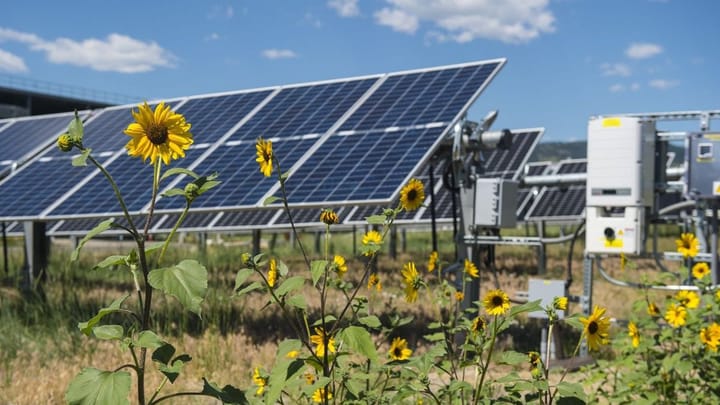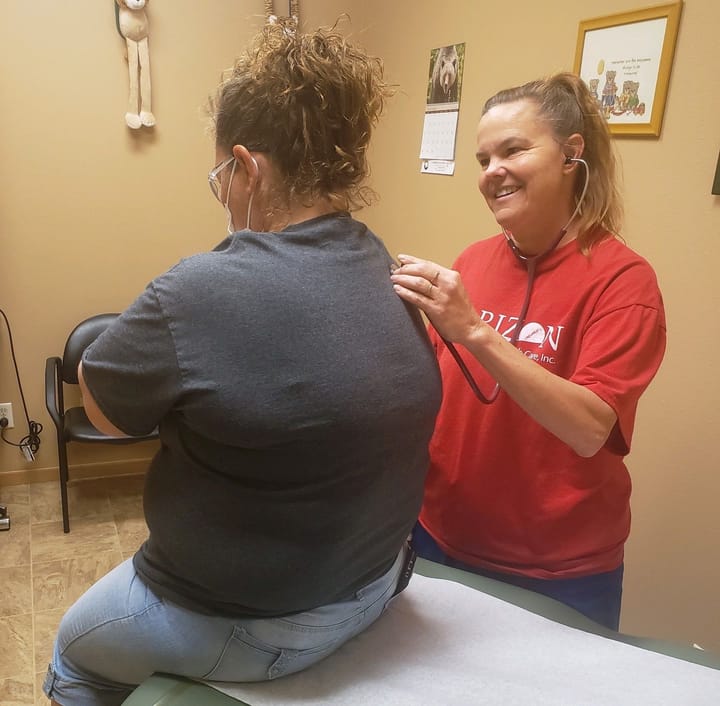Payday loans gone, but need for quick cash remains
RAPID CITY, S.D. – For 15 years, South Dakota residents who needed a small amount of money in a hurry could turn to storefront lenders who made so-called payday loans at annual interest rates that could rise well over 500 percent.
The industry thrived, and payday lending businesses that made loans on a weekly or monthly basis popped up by the dozens across the state.
But in late 2016, after a heated campaign that highlighted how some borrowers got trapped in a cycle of paying excessive interest and fees, South Dakota voters overwhelmingly approved a measure limiting the annual interest rate on short-term loans to 36 percent.
The new rate was a deadly blow to the industry. When the 36 percent annual rate is applied to loans made only for a week or a month, it made payday loans unprofitable.
As a result, just 15 months later, the payday industry in South Dakota is nearly extinct.
Backers of IM21 say they ended a form of predatory lending that hampered the ability of low-income borrowers to stabilize their finances and get out of debt. But the need for small cash loans remains great in South Dakota and options for short-term borrowers are few.
Some borrowers have turned to pawn shops to get money quickly. A few have visited credit unions or financial counseling services. But experts believe that many borrowers have turned to the internet and are using online lenders that consumer advocates and South Dakota’s top banking officer say are less regulated and more prone to fraud.

A 10-day death knell
During the campaign, backers of IM21 brought forward people who felt trapped in a cycle of paying loan interest that average more than 500 percent a year and could top 1,000 percent on an annualized basis. The payday industry spent more than $1 million to oppose the rate limits, but the stories of people who took out too many loans, title loans and signature loans or had trouble paying down the principal resonated with voters.
The vote on the initiative was a landslide, approved by 76 percent of voters. A competing constitutional amendment put forward by the payday loan industry that would have allowed for unlimited interest rates failed by a wide margin. IM 21 limited the rates on payday loans, title loans and signature loans, a less-common loan that could stretch out for more than a year.
The 36 percent APR limit took effect 10 days after the election.Within a week, signs appeared on the front doors of many of the state’s 440 licensed short-term lenders, informing customers the shops were about to close. Within months, nearly the entire industry – storefronts in Sioux Falls to Rapid City, from Mobridge to Yankton – had stopped making loans and prepared to close for good. Phone calls to shops in those and other South Dakota cities all led to disconnection messages.
Records from the South Dakota Division of Banking show that by January 2017, just six weeks after the vote, 111 of the state’s 441 licensed lenders of all types did not renew their annual licenses. Of those, 110 were short-term lenders affected by IM 21, according to Bret Afdahl, director of the Division of Banking. In early 2018, the office saw 73 non-renewals of annual licenses, of which 52 were short-term lenders, Afdahl said. He estimates that only a few dozen short-term lenders remain licensed in South Dakota, most likely to continue to pursue money owed on signature loans made prior to IM 21.
The immediate impact may have been most visible in Sioux Falls, where local businessman turned national lending magnate Chuck Brennan not only closed 11 of his Dollar Loan Center stores, but also put his massive pawn shop and motor speedway up for sale. Dollar Loan Centers in other South Dakota cities also packed up shop and vanished; Brennan continues to operate his businesses in several other states from his Las Vegas headquarters.
Opponents of short-term lending such as payday and title loans said IM21 put an end to usury lending and has led people who need small amounts of cash quickly to seek more scrutable sources with lower interest rates. Their hope is that without payday and title loans to draw upon, borrowers have turned to credit unions and banks, family members or employers.
“Our basic plan was, ‘Think where you’re going to go when your payday loan is overwhelming, and go there first,’” said Cathy Brechtelsbauer, a Sioux Falls advocate for the poor who is the state coordinator for the group Bread for the World.
“We work on hunger issues, and this was a hunger issue,” said Brechtelsbauer, who worked on a committee that pushed passage of IM21. “If you got trapped by the payday loans, then you can’t meet your basic needs.”

Some say lending limits penalize the poor
But to lenders, especially those at locally run stores where lenders had personal relationships with their clients, the death of the payday loan industry has actually penalized the poor, eliminating one easy way for people who live paycheck-to-paycheck to obtain cash to pay an emergency bill, buy food or pay utility bills between paydays, or avoid exorbitant overdraft charges.
Borrowers who had a job and could provide pay stubs, could obtain a loan for up to $500 usually for a one-month term or less. State law allowed lenders to rewrite the loan up to four times after the initial loan, and borrowers were required to pay off 10 percent of the principal at each renewal.
Under a typical payday loan, the borrower would owe 10 to 25 percent interest on a monthly basis on loans from $100 to $500. On the smallest but most common of loan of $100, a borrower would owe $110 to pay off the loan after a week, an annual APR of 520 percent. On a monthly term, the borrower would pay $125 to satisfy a $100 loan, an annual rate of 300 percent. On a $500 loan over a month, the borrower would pay a 25 percent monthly rate, or $625 to satisfy the loan after a month, a 300 percent annual rate.
For those who paid the loans back on time, typically within one month, the money could serve as a bridge between one payday to the next. But two payday loan scenarios could put borrowers in trouble.
First, they could quickly face a financial crisis if they took out too many loans at once.
“The only way you’d be ruined is if you went around to store after store after store, and when they all came due, you’re done,” said Rob Tschetter, owner of Pawn with Us in Rapid City who made payday loans for 15 years before IM21 took effect. “Based on your income, you might be able to afford a $1,200 monthly mortgage, but you don’t go out and buy five houses and have five mortgage payments of $1,200.”
Difficulty could also arise if the borrower couldn’t pay back the whole amount after the monthly loan came due. In the case of a $100 loan, the $25 fee was still owed along with a $10 payment toward principal, so with four renewals possible, the payments and interest rates quickly skyrocketed.
After the four monthly renewals allowed by law, and a requirement to pay down 10 percent of the principal at each renewal, that borrower of $100 would have paid $183 to satisfy that loan after five months, while the borrower of $500 would have paid a total of $995 over the five months to satisfy a $500 cash loan.
“Those were rare things, but those were the squeaky wheels who made the whole thing go down,” Tschetter said. “They blamed someone else for their problem; if those payday loan places weren’t around, I wouldn’t have this problem.”
Some lenders self-regulated
Tschetter regrets the loss of his payday loan business, but he also feels bad for the 200 or so clients who occasionally took out a loan to get by or survive a financial emergency.
“I have no shame in what I do, and I’m not trying to rip anyone off,” he said. “I was really helping people to help themselves, because you can’t get a $100 loan or $500 loan when you have bad credit or even when you have good credit.”
Tschetter also rejects the notion that payday customers were getting quick cash for illicit purposes.
“There’s a million hard-luck stories, and they’re kind of sad sometimes,” he said. “It’s that they need baby food, to pay a utility bill to not have their water cut off, or get a car repaired.”
To limit defaults on payday loans, Tschetter said he self-regulated in that he performed pre-loan background checks and never loaned anyone more than 15 percent of their net monthly income. Borrowers were also required to have an active bank account as proof that they had local ties and were stable enough to make required payments.
The state of South Dakota does not provide a way for lenders to check on how many loans potential customers already have outstanding or how much they owe other lenders.
At 36 percent APR, payday lenders say the loans were no longer profitable. The problem is that when that annual rate is applied to a short-term loan, there’s almost no way to cover the costs of running a business and covering losses due to defaults, according to Tschetter.
For example, a $100 payday loan on a 1-week term brought in $10 in interest prior to the initiative. But after the rate limits took effect, that same $100 loan for a week would only bring in 75 cents in interest.
“There’s no way it’s worth it to anyone to make those loans,” he said. “Plus, you just can’t go to a bank or credit union and get a $100 loan for $10. Even for me, with an 800 credit rating, it’s just impossible.”
Where did borrowers go?
Former payday loan customers are hard to find or won’t speak on the record due to embarrassment or privacy concerns.
But there’s no question a market remains in South Dakota for people who need cash quickly.
Some credit counselors think borrowers simply migrated to one of the many online lending agencies that pop up on any Google search for “payday loans.”
Even before IM21 passed, credit counselors were hearing from people who had taken out payday loans online, according to Sheri Eckdom, director of the Consumer Credit Counseling Service run by Lutheran Social Services in Sioux Falls.
Eckdom said people who came to her agency for help might have a payday loan, but that typically a short-term loan would be a part of a larger set of financial challenges.
“Sometimes we would hear from clients that were grateful for the payday loan because it helped fix the situation in the short term,” she said. “What we don’t know if it was a good thing in the long term.”
Eckdom said her agency has not seen a spike or a drop-off in clients since IM21 took effect.
"They haven't come knocking on the door of credit unions for small loans."
Moving from a storefront to online payday lending carriers its own set of heightened risks, said Jeff Olson, CEO of the Credit Union Association of the Dakotas, which represents 75 credit unions in North Dakota and South Dakota that serve more than 500,000 customers.
Despite claims by backers of IM21 that borrowers could eschew payday loans and instead turn to banks or credit unions for small cash loans, Olson said credit unions in South Dakota did not see an influx of borrowers after the measure took effect. “They haven’t come knocking on the door of credit unions for small loans,” he said.
Initially, Olson said, credit unions saw a slight uptick in customers who came in seeking cash to settle loans with payday lenders who were about to close and had called in all debts. Credit union officials offered financial counseling as part of their interaction with those clients, but most did not become credit union members, he said.
“What happens to these people is they turn to online lenders and then they get into more trouble,” Olson said. “There’s really no way to regulate those [online] companies on a consistent basis.”
The lack of oversight of online lenders is a national issue of concern for consumer advocates. More than a decade ago, the Consumer Federation of America published a report called, “Internet Payday Lending: How high-priced lenders use the internet to mine borrowers in debt and evade state consumer protections.”
The report concluded that online payday loans are an extremely high-risk venture prone to corruption and adverse to regulation. One big problem is that online payday lenders legally gain access to borrower bank and credit union accounts, and can make deductions without explanation.
“Payday loans made online combine the negative aspects of storefront payday loans … with the additional problems of jurisdictional and applicable law, security and privacy risks,” the report concluded. Furthermore, the report states, “Internet payday lenders bypass state usury laws and consumer protections by locating in lax regulatory states and making loans without complying with licensing requirements or state protections in the borrower’s home state.”
Afdahl said the state banking division tries to watch out for unscrupulous online lenders and occasionally hears from residents who are concerned about the validity of online companies.
“For the unscrupulous internet lenders, it’s definitely harder to track them and regulate them,” he said.
Unlike the former storefront payday lending sites, where regulators could pay a visit to a lender and look at their books, online lenders are hard to regulate because they are often based in other states, countries or on sovereign tribal lands, Afdahl said.
“There’s thousands of those things, so it’s kind of the whack-a-mole deal,” Afdahl said. “There’s no way to put a gate up at the state line that says you need to get our license here before you make a loan in South Dakota. The location and sheer volume of online lenders makes it difficult for South Dakota to monitor the industry, even to be sure they are licensed to do business in the state, which is required and makes them subject to state laws including IM 21.
“Could people be borrowing money from companies that are not licensed to do business in South Dakota? I would say yes,” Afdahl said. “But to what extent, we just have no way to know that.”
During debate over IM21 passed, backers of the initiative raised about $25,000 in private money and contracted with Grow South Dakota to administer a loan fund that could help people obtain small emergency loans.
The loans, up to $1,000, can be used for car repairs, to pay off an existing high-interest loan, or to satisfy a legal judgment or garnishment, said Lori Finnesand, CEO of the nonprofit finance agency located in Sisseton.
But for whatever reason, interest in the loan pool has been minimal, she said. To obtain a loan, potential borrowers must fill out paperwork and agree to undergo a credit counseling session with an agency near where they live.
“Actually, we haven’t made any loans,” Finnesand said. “We have had a few inquiries, but not a lot, not as many as we anticipated.”
Pawn shops see spike in business
Meanwhile, South Dakota pawn shops have seen their business increase in the wake of IM21.
“I’m thrilled,” said Mary Maddox, manager of First Cash & Exchange in east Sioux Falls.“It gives us business back, because if they could just get a loan on a check, they didn’t need us.”
She said she has seen a 20-30 percent jump in pawn transactions since IM21 took effect.
Pawn shops operate similar to payday loans except that they require collateral, and do not typically allow contracts to extend for more than 30 or 40 days. Interest rates on pawn transactions usually range from 20 to 25 percent over the month, translating to a 240 to 300 percent APR.
Maddox said there’s no question that there is still a great need for quick cash among South Dakotans who face financial challenges on a regular basis.
“We get a lot of calls from people still looking for payday loans or to borrow on their car title,” she said. “It’s not like you can go to the bank with your ring and borrow $100 – they’ll laugh at you.”
Pawn shops operate similar to payday loans except that they require collateral, and do not typically allow contracts to extend for more than 30 or 40 days. Interest rates on pawn transactions usually range from 20 to 25 percent over the month, translating to a 240 to 300 percent APR.
Maddox said there’s no question that there is still a great need for quick cash among South Dakotans who face financial challenges on a regular basis.
“We get a lot of calls from people still looking for payday loans or to borrow on their car title,” she said. “It’s not like you can go to the bank with your ring and borrow $100 – they’ll laugh at you.”
A solution in North Dakota?
The payday lending industry is big business across the country. In 2016, according to federal data, 12 million Americans borrowed $7 billion from 22,000 storefronts.
South Dakota is one of 32 U.S. states that allow payday lending. The loans are allowed in all Great Plains states, including Iowa, Minnesota, Nebraska, Montana and South and North Dakota.
Most states limit loans to $500 each, though allowable interest rates vary.
As the impacts of the 2016 vote play out in South Dakota, one expert said a different, less radical approach could have been found if state officials had just looked one state to the north.
In North Dakota, payday lenders still operate, mostly without complaint, due to a series of laws and regulations that one expert said put sensible limits on short-term lending that allowed customers to get their money with far less risk.
“South Dakota lawmakers kicked the can down the road and forced the public to do something about it,” said Olson of the credit union association.
But it wasn’t for a lack of trying. Lawmakers over the years repeatedly tried to regulate short-term lenders but the bills rarely if ever passed beyond their original committee assignment.
Olson said most payday lenders in North Dakota are locally run, since national firms feel they may not be able to make enough profit under the state’s strict regulations.
“Local owners are better because they know the community, and these national chains that come in don’t care, they were just there to make money,” he said.
The state also contracts with a company that compiles all borrower information into a database that must be checked by a lender prior to making any new loans and updated each time they make a new loan, said Aaron Webb, assistant commissioner for the North Dakota Department of Financial Institutions. “They [lenders] are required to verify that the person is qualified to take out a loan before making it,” Webb said.
The current system in North Dakota has drawn very limited complaints from consumers, he said.
Former Rep. Steve Hickey, a Sioux Falls Republican who is a pastor, brought a comprehensive short-term lending reform bill before the State House in 2014. The proposal was similar to North Dakota’s approach.
Among other things the bill would have instituted a borrower information database, limited outstanding loan amounts to $700 per borrower, created a 24-hour cooling off period where borrowers could change their minds and removed the ability of lenders to renew individual loans.
After a long presentation by Hickey and extensive discussion, the House Commerce and Energy Committee killed the bill on an 11-2 vote.



